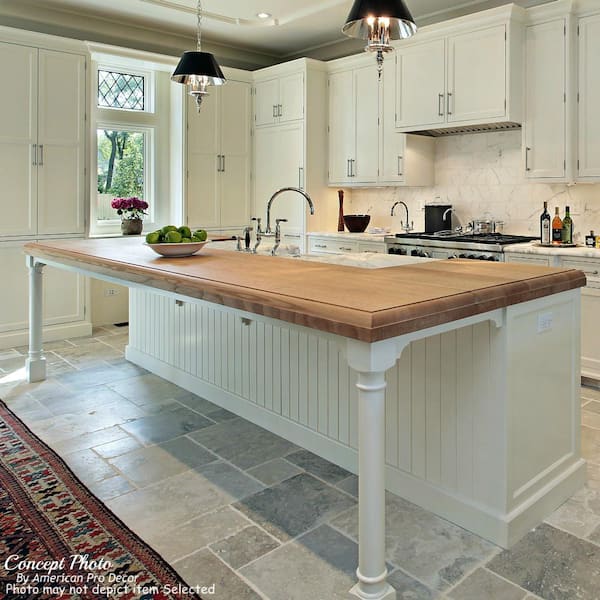The Top Kitchen Island Leg Styles to Enhance Any Kind Of Design Aesthetic
The Top Kitchen Island Leg Styles to Enhance Any Kind Of Design Aesthetic
Blog Article
The Value of a Sturdy Cooking Area Island Leg in Creating a Useful Cooking Area
A sturdy cooking area island leg offers as an essential component in developing a practical cooking environment, giving needed support for both the counter top and various cooking area tasks. As kitchens evolve right into multifunctional areas for cooking, eating, and mingling, the option of materials and design considerations for island legs ends up being significantly crucial.
Benefits of Sturdy Island Legs
Giving necessary assistance, durable kitchen area island legs play a pivotal duty in boosting the performance and sturdiness of kitchen area islands - kitchen island leg. These legs not just bear the weight of the kitchen counter and any type of additional products positioned on the island, however also add to the overall stability of the framework. A well-supported kitchen area island ensures that it stays upright and functional, also under heavy usage, which is particularly vital in hectic kitchen atmospheres
Moreover, durable island legs can boost the aesthetic allure of the kitchen. They supply a solid structure that can complement numerous design styles, from modern to typical. This adaptability allows home owners to customize their cooking area islands according to personal preference while guaranteeing that the architectural honesty remains uncompromised.
Along with their supportive function, durable kitchen area island legs can additionally boost safety and security. A stable island lowers the risk of mishaps triggered by tipping or tottering, which is especially vital in houses with children or elderly individuals. Additionally, strong legs can assist in a seamless flow of activities, enabling for effective dish prep work and social communications within the kitchen area area. Inevitably, purchasing durable kitchen island legs is crucial for a functional and visually pleasing cooking area.
Materials for Kitchen Island Legs
When choosing materials for kitchen island legs, longevity and visual appeal are critical variables to take into consideration,. The most usual products include hardwood, metal, and crafted timber, each offering distinct benefits.
Wood, such as cherry, maple, or oak, is a classic option because of its stamina and ageless elegance (kitchen island leg). It can hold up against substantial weight and is resistant to wear, making it suitable for high-use cooking area environments. Additionally, wood can be stained or painted to match different cooking area designs
Metal legs, frequently crafted from stainless steel or functioned iron, supply a commercial and modern appearance. They are incredibly solid and can support considerable lots while being resistant to dampness and warmth, which is helpful in a cooking area. Steel legs can also be quickly cleaned, boosting their functionality.

Layout Factors To Consider for Security
The selection of materials for cooking area island legs straight influences the design factors to consider for security. When designing a cooking area island, it is vital to review the weight-bearing capability of the picked materials. Larger materials, such as solid wood or metal, commonly give higher stability, particularly under the stress of day-to-day usage.
In addition, the leg style need to incorporate appropriate geometry to improve stability. A wider base increases the assistance location, lessening the risk of tipping or tottering. Consideration must likewise be given to the height of the legs; disproportionate leg sizes can lead to discrepancy, compromising the overall security of the island.
Moreover, the circulation of weight across the island is vital. Guaranteeing that the leg placement aligns with the heaviest components, such as counter tops and home appliances, will better enhance stability.
Maintenance Tips for Durability

Cleaning is one more critical element of maintenance. Relying on the material of the legs-- whether timber, metal, or composite-- ideal cleansing techniques need to be used. For wood legs, a gentle clean with a damp towel and an ideal timber cleaner will certainly aid protect their finish. Metal legs may need a light polish to avoid rust and maintain their gloss.
Additionally, tightening bolts and screws routinely can make certain stability and prevent wobbling. Think about enhancing the legs with added brackets or sustains to enhance resilience if the kitchen area island experiences hefty use. Applying a protective coating or sealant can protect versus dampness and discolorations, lengthening the lifespan of the legs. By adhering to these maintenance ideas, property owners can guarantee their cooking area island legs remain durable and practical for years ahead.
Selecting the Right Leg Style
Normal maintenance guarantees that kitchen island legs stay sturdy and useful, yet selecting the find out here appropriate leg style is equally look at here crucial for both aesthetic appeals and assistance. The selection of leg design can considerably influence the total layout and consistency of your kitchen area.

Functionality is one more important aspect. As an example, thicker legs or those with a strong base can sustain heavier counter tops and tools, enhancing the island's energy. On the other hand, slender legs might develop an airy look, ideal for lighter designs but possibly less helpful.
Final Thought
In recap, the value of sturdy kitchen area island legs can not be overemphasized in the development of a functional cooking location. These legs provide necessary assistance, boost security, and add to the general aesthetic of the kitchen.
A durable kitchen area island leg serves as a fundamental element in developing a useful cooking setting, offering required assistance for both the countertop and numerous kitchen area tasks.Giving necessary assistance, tough kitchen island legs play an essential role in improving the capability and resilience of cooking area islands. Eventually, spending in durable kitchen area island legs is necessary for a useful and aesthetically pleasing cooking location.
Factor to consider must also be provided to the height of review the legs; out of proportion leg sizes can lead to discrepancy, compromising the general security of the island.
Wooden legs offer warmth and a traditional look, while metal legs offer a modern and industrial feel.
Report this page